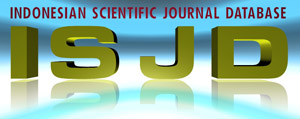BENTUK PERKAWINAN MATRIARKI PADA MASYARAKAT HINDU BALI DITINJAU DARI PERSPEKTIF HUKUM ADAT DAN KESETARAAN GENDER
DOI:
https://doi.org/10.23887/jish-undiksha.v5i1.8284Abstract
Abstrak Secara umum penelitian ini bertujuan untuk mengembangkan model hukum perkawinan berorientasi gender berbasis desa adat Hindu Bali. Penelitian ini akan dilakukan selama 3 tahun, yaitu dari tahun 2015 sampai dengan tahun 2016. Luaran penelitian selama tiga tahun dapat dijabarkan sebagai berikut: (1) luaran tahun I (2015) terdiri adalah artikel ilmiah di jurnal terakreditasi, dan draft buku ajar hukum waris pengaruh dari perkawinan berorientasi gender berbasis desa adat Hindu Bali. (2) luaran tahun II (2016) terdiri adalah artikel ilmiah di jurnal nasional terakreditasi, dan buku ajar terkait dengan hukum waris pengaruh dari perkawinan berorientasi gender berbasis desa adat Hindu Bali, dan artikel ilmiah di jurnal internasional. Hasil penelitian bentuk perkawinan matriarki di beberapa daerah di provinsi Bali seperti Buleleng, Tabanan, Gianyar, telah dijumpai penerapannya dalam masyarakat, sedangkan, di beberapa daerah lain seperti Jembrana, Klungkung, dan Bangli masih menolak bentuk perkawinan nyentana (nyeburin) yang secara proses menyerupai perkawinan matriarki, namun menurut esensinya status putrika pada anak perempuan yang menjadi sentana rajeg sudah didaulat berdasarkan pauman krama sebagai purusa (status laki-laki) penerus keturunan keluarga. Beberapa daerah lain seperti Karangasem, dan Kodya Denpasar, di satu sisi pada umumnya masyarakat menganut bentuk perkawinan patriarki, tapi dalam prakteknya tidak dapat dipungkiri ada beberapa desa seperti Tianyar, dan Abang di wilayah kabupaten Karangasem yang dijumpai telah melaksanakan bentuk perkawinan matriarki. Dikaitkan dengan pewarisan, pengaruh bentuk perkawinan matriarki terhadap anak perempuan yang semula bukan sebagai ahli waris dapat menjadi ahli waris terhadap harta orang tuanya. Implikasinya putrika mempunyai kewenangan yang sama dengan laki-laki untuk mewarisi harta kekayaan dan sanggah (tempat suci keluarga) sebagaimana layaknya laki-laki. Model rekonstruksi kebijakan perkawinan yang direkomendasikan oleh peneliti menjawab permasalahan di lapangan adalah penerapan model formulasi kebijakan perkawinan parental (Pada Gelahang). Kata Kunci: perkawinan, matriarki, gender. Abstract In general, this study aims to develop a model of marriage laws gender-oriented village-based traditional Hindu Bali. This study will be conducted over three years, from 2015 until 2016. The output of the study for three years can be described as follows: (1) outputs the first year (2015) is composed of scientific articles in accredited journals and textbooks draft law of inheritance the influence of gender-oriented marriage of traditional village-based Hindu Bali. (2) The outcome of the second year (2016) is composed of scientific articles in accredited national journals, and textbooks related to inheritance laws the influence of gender-oriented marital village-based traditional Balinese Hindu and scientific articles in international journals. The results of the study form of marriage matriarki in some areas in the province of Bali as Buleleng, Tabanan, Gianyar, has found its application in society, whereas, in some other areas such as Jembrana, Klungkung and Bangli still refuse forms of marriage nyentana (nyeburin) which process resembles marriage matriarki, but according to its essence putrika status in young women who become Rajeg cemetery has been asked by pauman manners as purusa (status male) successor to the family lineage. Several other areas such as Karangasem, and Denpasar municipality, on the one hand to the general public embrace patriarchal forms of marriage, but in practice there is no doubt there are some villages like Tianyar, and brother in the district of Karangasem who are found to carry out the marriage form matriarki. Associated with inheritance, marriage forms matriarki effect against girls which was originally not as heirs may be heir to the wealth of their parents. , The implication putrika have the same authority as men to inherit wealth and corrected (sanctum family) as befits a man. Model reconstruction marriage policy recommended by researchers to answer the problem in the field is the application of the model policy formulation parental marriage (In Gelahang). Keywords: marriage, matriarki, gender.Downloads
Issue
Section
Articles
License
Authors who publish with the Jurnal Ilmu Sosial dan Humaniora agree to the following terms:
- Authors retain copyright and grant the journal the right of first publication with the work simultaneously licensed under a Creative Commons Attribution License (CC BY-SA 4.0) that allows others to share the work with an acknowledgment of the work's authorship and initial publication in this journal.
- Authors are able to enter into separate, additional contractual arrangements for the non-exclusive distribution of the journal's published version of the work (e.g., post it to an institutional repository or publish it in a book), with an acknowledgment of its initial publication in this journal.
- Authors are permitted and encouraged to post their work online (e.g., in institutional repositories or on their website) prior to and during the submission process, as it can lead to productive exchanges, as well as earlier and greater citation of published work. (See The Effect of Open Access)


.png)
.png)













